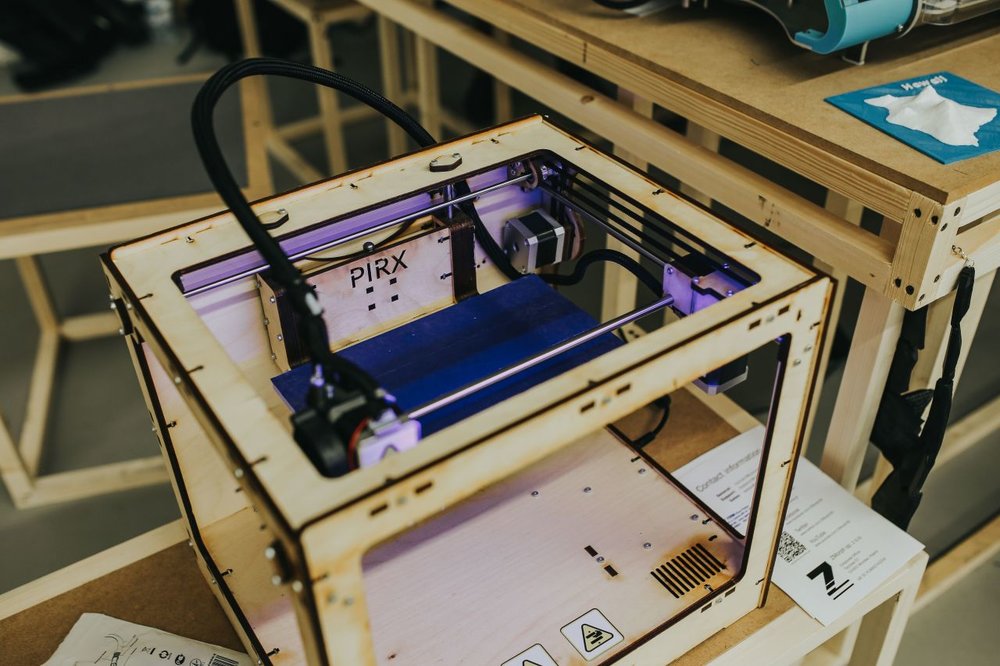DISRUPTIVE TECHNOLOGIES FOR ESPORTS: 3D PRINTING

3D Printer (Photo: KaboomPics)
TNL Industry Guest Post 007: Over the past 13 years, Anton Ferraro has helped develop numerous esports focused properties including tournament broadcasts, television programs, streaming platforms, branded campaigns, digital products & live event activations.
Anton began his career in 2004 by organizing and playing at local Halo events and shortly thereafter joined Major League Gaming to assist their media efforts. After 8 years with the company Anton transitioned to the West Coast and helped build the Azubu streaming platform as Director of Content.
Anton currently resides in Brooklyn, New York with his wife and pug. Too much of his time is spent playing Overwatch. You can view his work at www.AntonFerraro.com
TNL Take: In the last post I explored the potential impact of the Ethereum Blockchain across a few different verticals and will have a follow up post shortly. Today we’ll examine opportunities 3D printing can provide within eSports.
A CASE STUDY IN STREAMING
In the late 00’s a group of entrepreneurs saw that the cost of delivering a video stream over a network was falling exponentially. At the same time, the proliferation of high speed internet and Moore's Law were allowing an increasing number of hobbyists to engage in the activity.
After a few years of hard work, a few pivots and the ever-needed bit of luck, Twitch sold to Amazon for ~$1B and currently sits as one of the top websites in the world.
3D printing is an industry which mirrors that of streaming.
The technology for printing is becoming exponentially better while the cost to participate is falling. This is allowing an increasing amount of hobbyists to create increasingly more impressive offerings. Digital hubs like MyMiniFactory and support networks like Patreon are allowing some of these hobbyists to generate revenue.
The decentralized nature of the activity will provide opportunities for content creators while challenging IP owners.
The situation parallels the early days of YouTube when video creators utilized IP’s belonging to publishers to create their own content. Heavy handed reproaches by the IP owners were not effective for a multitude of reasons and it took years for the platforms, creators, and IP owners to find a balance all three parties could accept.
Ultimately the IP owners aka Game Publishers realized that free content was an ongoing advertising campaign they could use to greatly increase revenue [Edit: Read this line again and again]
Publishers shifted their product development cycles and created DLC (Downloadable Content) and the GAAS (Games As A Service) business model started padding their bottom lines.
Early movers like TSM and OpTic Gaming built highly engaged followings off the video niche and are still reaping the rewards of that effort. While I expect it will take a few years for the 3D printing vertical to mature, as always early movers may score similar gains.
THE IMPLICATIONS OF 3D PRINTING
3D printing will impact eSports by improving the product design and distribution aspects of merchandising. The current merchandising model imposes limits on experimentation and requires long turn around periods for heavily customized gear.
eSports owners are frequently limited by the options offered by their suppliers which has caused a glut of similar items such as the same t-shirts, hats, keychains, hats, and posters.
PRODUCT DESIGN
Adding a 3D printing capabilities will allow eSports teams to capitalize on time sensitive tentpole events. Having a subject matter expert designing the gear in house will both shorten the design cycle and increase the authenticity of the item:
- Custom bobble heads for new roster additions
- Commemorative medals based on tournament victories
- Supporting merchandise for viral content
The latest generation of 3D printers are also capable of printing complex electronic components. Once this tech hits the prosumer level it will be possible to create merchandise that can interface with digital libraries to provide additional value to the customer. [Edit: Hi Amazon and the NFL]

http://tnl.media/esportsnews/2017/8/22/ea-madden-nfl-amazon-mobile
DISTRIBUTION
The current model is a pipeline of injection mold design, mass production, and distribution via international shipping.
Injection molds are expensive to produce.
Only after selling a specified amount of merchandise does the designer hit a break even point that pays for the injection mold.
The 3D printing model does not require injection molds and eliminates the risks associated with minimum product and the need to accurately forecast demand. This makes it economically viable to profit from small batches of items and scale up if and when a greater demand materializes.
3D printing is already seeing factories and prosumer level printers offering their services in many areas around the globe. This moves the responsibility of distribution costs and logistics away from designers and allows them to focus on the product.
CHALLENGES

Would You? (Photo: Someone On The Internet)
As with any disruptive technology there are legal and hardware hurdles that need need to be overcome:
- 3D printing is the perfect storm of patent, IP and privacy law
- Printers need to get faster & cheaper
- The technology needs to be more consumer friendly
Despite these challenges I believe the momentum of the 3D printing industry will force the existing status-quo to be transformed as it was with eSports video and live streaming.